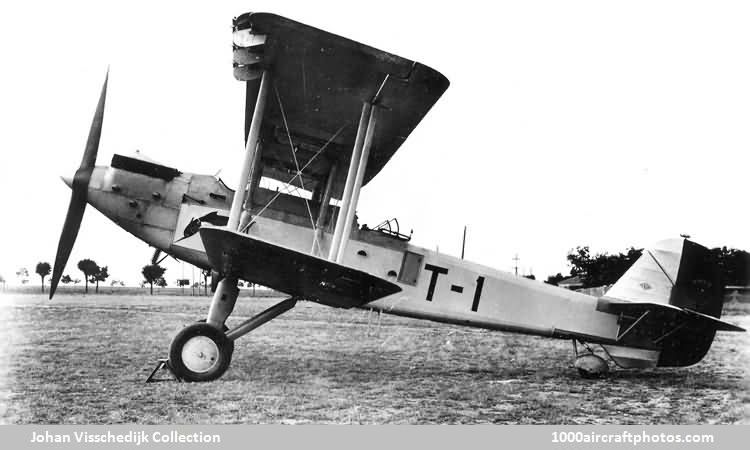11/30/2009. Remarks by Johan Visschedijk: "The Vildebeest (Wildebeest) was designed to Specification 24/25 for a two-seat torpedo-carrying and bombing landplane. The prototype, built to contract 693542/26, was first flown at Brooklands by E.R.C. 'Tiny' Scholefield in April 1928, designated Type 132 and carrying the serial N230. It was fitted with several engines, initially a 460 hp Bristol Jupiter Mk.VIII nine-cylinder air-cooled radial engine, subsequently a 540 hp Jupiter Mk.XF was fitted and it was redesignated Type 192 Series II.
In June 1930 the prototype was shown to an aviation mission from the Spanish Ministry of Marine, fitted with a 600 hp Hispano-Suiza 12Lbr twelve-cylinder liquid-cooled V-engine and Supermarine floats, while carrying the 'Class B' marking O-3, and redesignated Type 216 Series VII.
In August 1930, a second (private venture) prototype was flown as Type 204 Series IV, with the 'Class B' marking O-1. On March 10, 1931, this aircraft was registered as G-ABJK, Type 217 Series VII, however it was deregistered the following month. It was lost in a crash at Farnborough in 1932.
On November 11, 1930, the first prototype was registered as G-ABGE, and it attended the Paris Aero Show (November 24 to December 5, 1930) in landplane form as the Type 194 Series III, fitted with a 500 hp Jupiter Mk.XIF radial engine. As the Type 214 Series VI it was re-engined in January 1931, this time with an experimental development of the Jupiter, the 600 hp XFBM (later produced as the Pegasus IM3).
On September 30, 1931, G-ABGE was converted back to the seaplane configuration and started a demonstration tour to Holland, Denmark, Sweden, Finland, Latvia, and Lithuania, from where it was shipped back to the UK.
Subsequently G-ABGE and components for a second aircraft were sold to Spain. The components were assembled by Construcciones Aeronauticas S.A. (CASA) at Cadiz, that also received a license to produce 25 additional aircraft. G-ABGE was reregistered as EC-W11 (incorrectly applied to the aircraft as EC-WLL), and as a landplane it was ferried to Madrid by H.W.R. Banting on March 24 to 27, 1932. The aircraft was lost when it was shot down over Iznalloz on July 31, 1936.
Including prototype and license production, a total of 209 aircraft were produced, pictured is the first CASA production aircraft."
